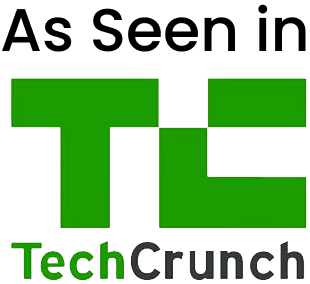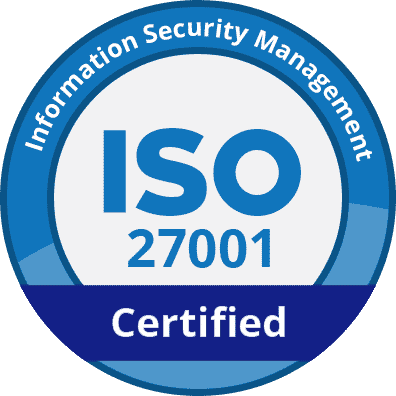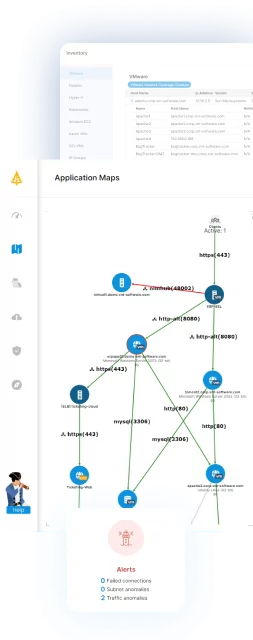ITOM visibility refers to insight into an organization’s IT operations management (ITOM) landscape. It involves understanding and managing the infrastructure and services an IT department provides, assessing how these elements operate, and ensuring they meet the business’s needs.
This visibility is crucial in identifying the health, performance, and relationship between various IT components to enable optimal operations. Visibility helps organizations align their IT services and resources with business goals, improving service delivery and operational efficiency.
Achieving ITOM visibility helps organizations anticipate and solve problems more effectively, enabling a smooth-running IT environment. It ensures that IT teams have the necessary information to maintain system health, boost performance, and minimize downtime.
Table of Contents
ToggleThe Importance of ITOM Visibility in Modern Enterprises
ITOM visibility is essential for modern enterprises to manage their IT infrastructure. It provides a unified view of all IT assets, including on-premises and cloud-based systems, enabling organizations to monitor performance, detect issues, and ensure optimal operation.
By automating the discovery and mapping of IT assets and their interdependencies, ITOM visibility reduces manual efforts and minimizes errors. This automation allows IT teams to respond swiftly to incidents and changes, maintaining an accurate configuration management database (CMDB) and supporting efficient IT operations.
ITOM visibility improves security by providing real-time insights into the IT environment, helping organizations identify and address vulnerabilities promptly. It also supports compliance efforts by ensuring that IT assets and configurations adhere to established policies and standards.
Key Components of ITOM Visibility
Discovery and Asset Management
Discovery involves the automated identification and tracking of all IT assets across the organization. It creates an inventory of hardware and software, offering a foundation for managing IT resources. This process ensures IT teams are aware of every component within their ecosystem, supporting monitoring and management.
Asset management involves maintaining and updating this inventory to reflect any changes, such as additions, removals, or updates to the infrastructure. This dynamic management allows for accurate insights into the IT landscape, enabling quick decision-making and strategic planning.
Service Mapping and Dependency Visualization
Service mapping identifies the relationships between various IT elements, such as servers, applications, and databases, creating a view of service delivery. This perspective helps in understanding how disruptions in one area can affect others, improving incident response and resolution.
Dependency visualization extends this understanding by graphically representing these relationships, enabling IT teams to see the entire IT ecosystem’s structure. This visualization aids in diagnosing issues and analyzing the potential impact of changes. By mapping services and visualizing dependencies, organizations can ensure smoother operations.
Event Management and Monitoring
Event management and monitoring provide real-time insights into IT operations. Event management involves identifying significant occurrences within the IT infrastructure and processing them to determine their importance. It helps prioritize events requiring immediate attention, enabling a faster response to potential issues.
Monitoring complements event management by continuously observing IT systems’ health and performance. Through monitoring, IT teams can detect anomalies, track resource utilization, and ensure systems run efficiently. By integrating event management and monitoring, organizations can proactively manage their IT environments and prevent service disruptions.
Configuration Management Database (CMDB)
The configuration management database (CMDB) acts as a centralized repository for all IT configuration items. It stores data about hardware, software, networks, and their relationships, providing a complete view of the IT environment. This database supports change management processes by helping assess the impact of proposed changes on the IT infrastructure.
By maintaining an accurate CMDB, organizations can ensure reliable decision-making and risk management. It enables efficient incident management by offering insights into potential root causes and affected areas. The CMDB’s comprehensive nature aids in strategic planning, ensuring IT assets align with business objectives and compliance requirements.

Lanir specializes in founding new tech companies for Enterprise Software: Assemble and nurture a great team, Early stage funding to growth late stage, One design partner to hundreds of enterprise customers, MVP to Enterprise grade product, Low level kernel engineering to AI/ML and BigData, One advisory board to a long list of shareholders and board members of the worlds largest VCs
Tips from the Expert
- Focus on prioritizing critical services first: Instead of mapping and monitoring everything at once, identify and prioritize high-value, mission-critical services. This approach ensures that ITOM efforts directly impact business outcomes while avoiding resource overload.
- Leverage AI/ML for anomaly detection: Integrate AI/ML into event management systems to detect anomalies and predict outages before they occur. This reduces reliance on manual pattern recognition and enhances proactive resolution capabilities.
- Implement dynamic dependency mapping: Use tools that automatically update dependency maps in real time as IT environments change. This is especially useful in dynamic environments like cloud and containerized infrastructures, where relationships between services evolve rapidly.
- Enable business context in the CMDB: Augment the CMDB by including metadata that ties IT assets to specific business functions or outcomes. For example, tagging a server as supporting the “online payments” service allows IT teams to assess the business impact of outages quickly.
- Adopt a unified data strategy: Create a centralized data platform or data lake for ITOM-related data. Consolidating logs, metrics, and events into one repository enables better correlation and visualization, reducing silos and increasing operational clarity.
Challenges in Achieving ITOM Visibility
While ITOM visibility is essential for effective IT operations, achieving it is not without obstacles. Organizations must navigate several technical, organizational, and resource-related challenges to ensure comprehensive visibility and optimal IT performance:
- Fragmented IT environments: Modern IT landscapes often consist of hybrid infrastructures, combining on-premises systems, cloud platforms, and third-party services. This fragmentation makes it difficult to gain a unified view of all IT assets and their interdependencies, limiting comprehensive visibility. Integrating data from diverse environments requires advanced tools and consistent processes, which can be challenging to implement and maintain.
- Dynamic infrastructure changes: With the rapid adoption of DevOps, containerization, and microservices, IT environments are highly dynamic. Frequent changes to infrastructure, such as scaling up or down, updating configurations, or deploying new services, can lead to outdated or incomplete visibility if discovery processes are not automated and continuous.
- Siloed data and teams: Organizational silos, where data and responsibilities are split across different teams or departments, hinder the ability to build a holistic view of the IT landscape. This separation can result in inconsistent data collection, duplicated efforts, and blind spots, making it harder to identify the root causes of issues or optimize IT operations.
- Lack of integration between tools: Many organizations use multiple tools for monitoring, asset management, service mapping, and event management. If these tools are not integrated, it becomes difficult to correlate data and achieve a unified perspective. Disconnected systems can lead to delays in incident response and missed opportunities for optimization.
- Data overload: ITOM visibility tools generate a large volume of data from various sources, including logs, metrics, and events. Without proper filtering, correlation, and prioritization, this data can overwhelm IT teams, making it harder to focus on critical insights and take timely action.
- Resource constraints: Achieving and maintaining ITOM visibility often requires significant investments in tools, infrastructure, and skilled personnel. Organizations with limited budgets or expertise may struggle to implement the necessary solutions, leaving gaps in their visibility and increasing operational risks.
5 Best Practices for Improving ITOM Visibility
Organizations can ensure thorough and accurate visibility for IT operations management by implementing the following best practices.
1. Implement Continuous Discovery
Continuous discovery is crucial for maintaining up-to-date ITOM visibility. Unlike periodic updates, continuous discovery involves ongoing assessments to identify new or altered IT assets within the ecosystem. This approach ensures an accurate and current understanding of the IT environment, which is vital for effective management and rapid decision-making.
Implementing continuous discovery requires advanced tools capable of automatically detecting changes and integrating data into the centralized IT management system. By keeping this real-time information, organizations can better anticipate system needs and allocate resources effectively, minimizing the risk of system vulnerabilities and improving operational efficiency.
2. Maintain an Accurate CMDB
An accurate CMDB is essential for improving ITOM visibility. Maintaining this database involves regular updates and validations to ensure it reflects the current state of the IT environment. This accuracy is crucial for supporting change management, as it provides detailed insights into configuration items and their interdependencies.
To maintain an accurate CMDB, organizations should implement processes for auditing and reconciling data discrepancies. Automation tools can help simplify these processes by automatically updating entries and identifying potential errors. A well-maintained CMDB enables efficient IT service management, improving decision-making and reducing the risk of service disruptions.
3. Integrate ITOM with ITSM Processes
Integrating ITOM with ITSM processes provides a more comprehensive view of IT operations. This integration allows for seamless information flow between operations and service management, improving decision-making. ITSM tools can complement ITOM initiatives by offering insights into incident, problem, and change management.
Effective integration requires a cultural shift towards collaborative operations and service management. Organizations should adopt interoperable tools and frameworks that enable seamless communication and data exchange. This synergy between ITOM and ITSM processes leads to improved incident handling, reduced downtime, and alignment with business goals.
Learn more in our detailed guide to ITOM vs ITSM
4. Foster Cross-Functional Collaboration
IT teams need to work alongside other departments, such as network, security, and development teams, to gain a holistic view of the IT environment. This collaboration promotes transparency and ensures that all stakeholders have access to necessary information to maintain system health and performance.
To foster this collaboration, organizations should encourage open communication and shared objectives among different teams. Regular meetings and joint projects can help break down silos and build relationships. By promoting cross-functional collaboration, organizations can improve their ITOM practices, supporting efficient operations and improved service delivery.
5. Utilize Real-Time Monitoring Tools
Real-time monitoring tools provide continuous insights into system performance and health. These tools enable IT teams to detect anomalies, track usage patterns, and identify potential issues before they escalate into significant problems. Real-time monitoring supports proactive management, minimizing downtime and improving overall operational efficiency.
To leverage these tools effectively, organizations should ensure they are integrated with their existing IT management systems, allowing for seamless data flow and comprehensive visibility. By utilizing real-time monitoring tools, organizations can maintain a well-functioning IT environment, enabling quick response to issues and strategic decision-making.
Boosting ITOM Visibility with Faddom
To achieve complete IT Operations Management (ITOM) visibility, a platform must offer continuous discovery, real-time monitoring, and automated dependency mapping. Faddom is an exceptional choice for this purpose. Faddom utilizes a lightweight, agentless approach to application dependency mapping and infrastructure monitoring, allowing IT teams to gain comprehensive insights into their on-premises, cloud, and hybrid environments without compromising performance.
Here’s how Faddom supports the best practices for enhancing ITOM visibility:
- Continuous Discovery: Faddom automatically maps all IT assets and their dependencies in real-time, ensuring that organizations maintain an up-to-date understanding of their IT landscape.
- Accurate CMDB Maintenance: By integrating with CMDBs, Faddom keeps records current and eliminates blind spots, improving change management and risk assessment.
- Seamless ITOM & ITSM Integration: Faddom supports ITSM workflows, enabling IT operations and service management teams to collaborate efficiently using accurate, real-time data.
- Cross-Functional Collaboration: Faddom’s intuitive visualization capabilities help IT, security, and DevOps teams align their efforts, diagnose issues more quickly, and enhance operational efficiency.
- Real-Time Monitoring: With continuous visibility into infrastructure, Faddom helps identify and mitigate risks proactively, reducing downtime and ensuring business continuity.
For enterprises aiming to enhance ITOM visibility, boost operational efficiency, and strengthen cybersecurity, Faddom provides the most effective and cost-efficient solution, with rapid deployment in under 60 minutes.
Ready to simplify ITOM visibility? Schedule a demo today and see how Faddom can transform your IT operations!





